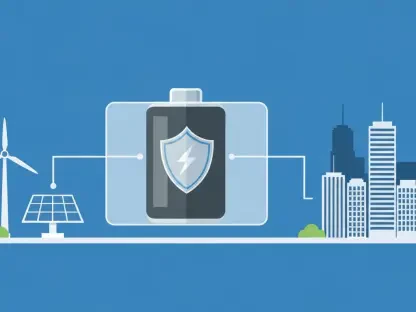Malaysia is witnessing substantial growth in its data center industry, a trend with significant implications for the country’s energy landscape. This boom is fundamentally driven by a growing demand for digital infrastructure, which, in turn, places a substantial demand on the energy sector, particularly for renewables. As digital technologies become more integral to both businesses and consumers, the data centers hosting these technologies require immense amounts of power. This demand aligns with Malaysia’s strategic goals to enhance its renewable energy capacity. Government plans to raise renewable energy capacity to 40% by 2035 and to 70% by 2050 necessitate vast investments, estimated to be around MYR 637 billion ($149.81 billion), clearly indicating the scale of this transition.
Renewable Energy and Data Center Expansion
Alignment with National Energy Goals
The interplay between data center growth and renewable energy development is pivotal to Malaysia’s long-term energy strategy. The energy-intensive nature of data centers is redirected toward positive socioeconomic outcomes when paired with renewable energy targets. The country’s focus on initiatives like the Large-Scale Solar 6 (LSS6) demonstrates this alignment of interests. As new contracts are projected to hit MYR 10 billion ($2.35 billion) to MYR 15 billion ($3.53 billion), there is significant encouragement for solar energy adoption. By fostering a market for green energy, Malaysia not only addresses the power needs of its proliferating digital infrastructure but also moves closer to meeting its environmental targets. The alignment of business and policy initiatives underscores Malaysia’s straightforward path toward sustainable development.
Strategic Investments in the Energy Sector
Facilitating the necessary adjustments in infrastructure to accommodate these ambitions requires deliberate and sustained efforts. Tenaga Nasional Berhad (TNB), the national energy provider, operates as a strategic link in this transformation. With significant capital injections aimed at modernizing and expanding the national grid, TNB ensures that Malaysia’s energy infrastructure keeps pace with increasing demands. Investment in new power plant developments complements these efforts, positioning Malaysia’s energy landscape as robust and flexible. These advancements in infrastructure effectively support the implementation of an enlarged renewable energy grid, which is vital to sustain both the current growth of data centers and future expansions. TNB’s proactive stance confirms Malaysia’s readiness to achieve its energy goals and cater to burgeoning electricity requirements.
Challenges and Opportunities in the Sector
The Impact of Geopolitical Tensions
While Malaysia’s data centers are flourishing, they are not completely insulated from global challenges, such as potential restrictions on technology imports. A notable concern revolves around limitations on U.S. AI chips, which could affect many sectors relying on advanced computational capabilities. However, the impact on Malaysia’s data center operations appears limited. Malaysia’s strategic positioning in the global supply chain, coupled with regional partnerships, mitigates these external pressures. The country’s diversified tech ecosystem provides a buffer against geopolitical fluctuations, enabling data centers to maintain growth momentum without significant disruptions. These geopolitical tensions serve as a reminder of the complexities inherent in a globally interconnected digital economy.
Future of Data Centers and Energy
As data centers expand, they present both challenges and opportunities for Malaysia’s energy sector. Their energy profiles push the need for sustainable solutions and improved energy efficiency practices. Simultaneously, these challenges present opportunities for innovation, prompting advancements in cooling technologies and smart energy management systems. The push toward implementing cutting-edge solutions further positions Malaysia as a leader in smart infrastructure development. Bridging the gap between current practices and future standards, Malaysia’s data centers are poised to leverage technology to enhance not only performance but also sustainability. This intersection of technology and energy paves the way for resilient and efficient digital infrastructure.
Looking Ahead
As data centers continue to grow, they present both hurdles and possibilities for Malaysia’s energy sector. These centers require significant power, which underscores the urgent need for sustainable energy solutions and enhanced efficiency practices. At the same time, these challenges create avenues for innovation, driving progress in cooling technologies and smart energy management systems. This focus on adopting advanced solutions positions Malaysia as a frontrunner in the development of smart infrastructure. By bridging the gap between current practices and future standards, Malaysia’s data centers are well-placed to harness technology to boost both performance and sustainability. This convergence of technology and energy sets the stage for resilient and efficient digital infrastructure, ensuring that Malaysia can meet the demands of an increasingly digital world. This proactive approach not only enhances the country’s competitive edge but also aligns with global sustainability goals, ultimately contributing to a greener, more efficient future in the energy landscape.









